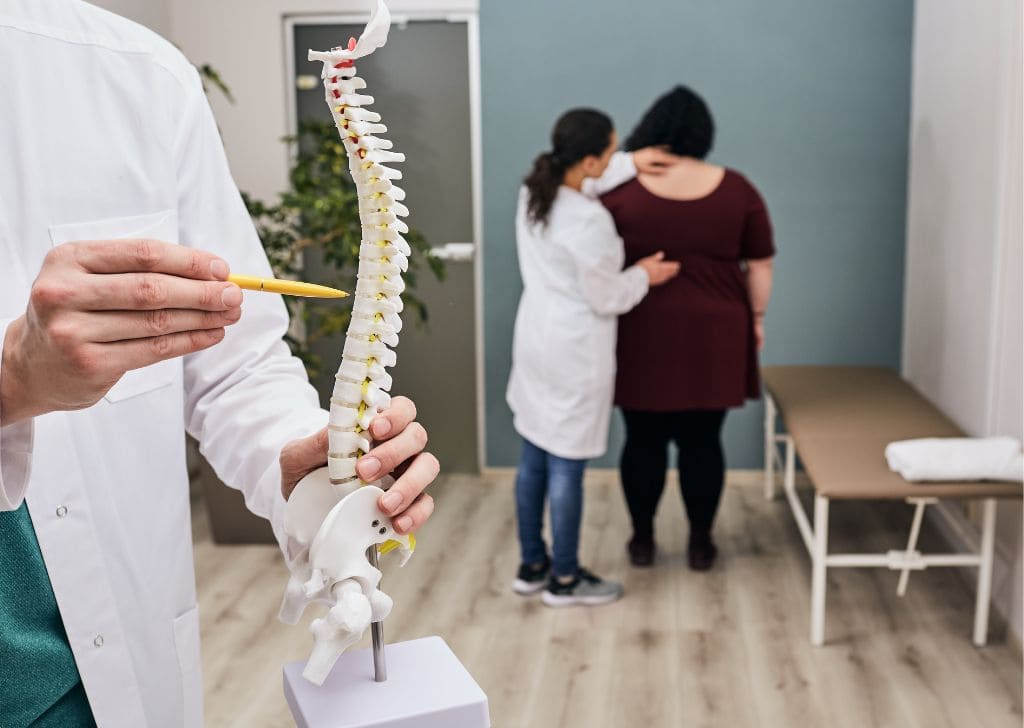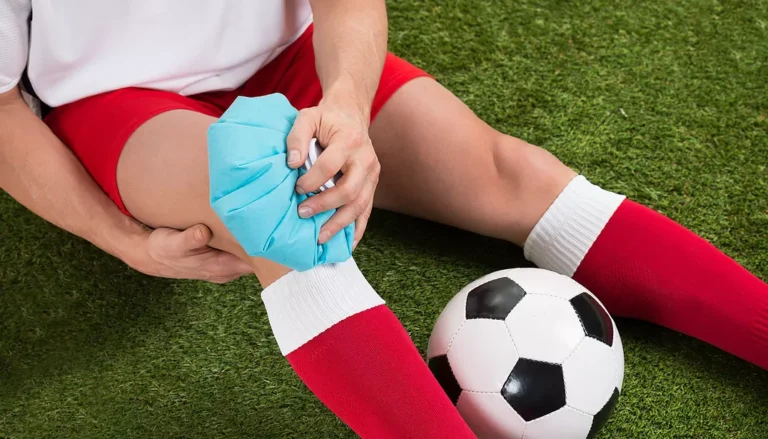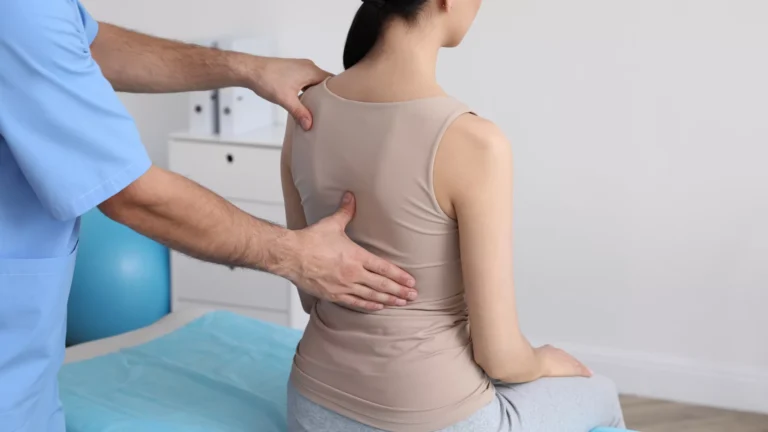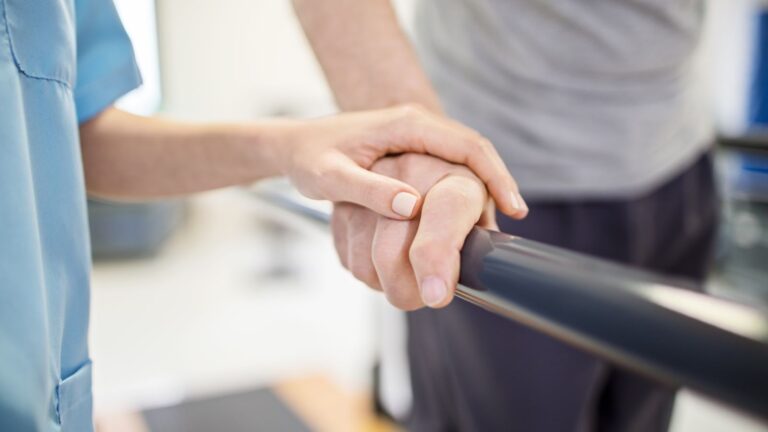Scoliosis isn’t just about bad posture. It’s a real spinal condition that can affect how you walk, breathe, move, and live. But the good news? You’re not powerless against it.
From teens growing fast to adults with chronic back pain, scoliosis shows up in many ways. Whether you’ve just been diagnosed or are wondering if your back pain has something to do with curvature of the spine, understanding the scoliosis causes is your first step to effective, non-surgical care.
Here’s everything you need to know – in simple, real-world language.
What Is Scoliosis, Really?
Scoliosis is a condition where the spine curves sideways – typically in an “S” or “C” shape – rather than remaining straight when viewed from behind. A normal curvature of the spine includes gentle, natural curves at the neck and lower back. But scoliosis is a structural misalignment that often worsens without intervention.
You might notice uneven shoulders, tilted hips, or a ribcage that seems more prominent on one side. Some people feel no symptoms at all. Others experience pain, fatigue, or muscle stiffness. The reality is – scoliosis can be subtle or severe, but it always deserves attention.
Common Scoliosis Causes Explained
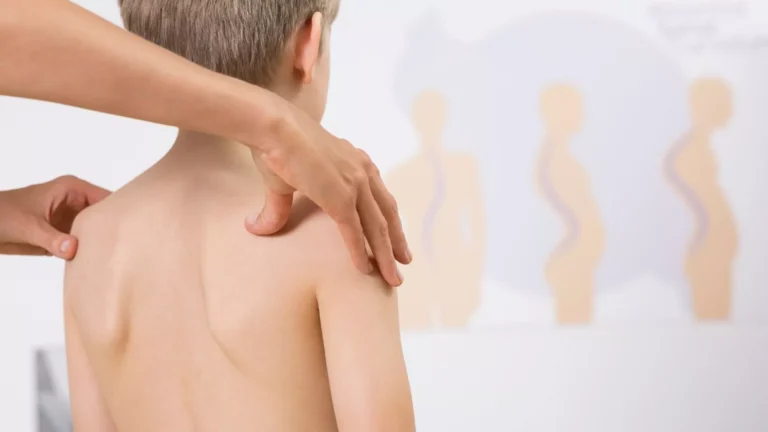
Scoliosis isn’t caused by one single thing – and in most cases, the exact trigger remains unknown. But experts classify it into a few main categories:
Congenital Scoliosis
This form develops before birth due to spinal bones forming abnormally in the womb. It’s rare but often more complex, requiring early medical monitoring.
Neuromuscular & Degenerative Scoliosis
Neuromuscular scoliosis stems from conditions like cerebral palsy or muscular dystrophy, where muscle imbalance pulls the spine sideways. Degenerative scoliosis, more common in adults, occurs when spinal discs and joints wear out with age.
Idiopathic Scoliosis
This is the most common type, especially in teenagers. The term “idiopathic” means there’s no clear cause – though genetics likely play a role. It usually develops during growth spurts.
Hereditary & Lifestyle Factors
While scoliosis isn’t directly caused by bad posture or heavy school bags, poor ergonomics can worsen symptoms. If you have a family history of scoliosis, your chances of developing it increase.
How Do I Know If I Have Scoliosis?
This is one of the most common questions we hear: “How do I know if I have scoliosis?”
Here’s what to look out for:
- One shoulder sits higher than the other
- Waist or hips appear uneven
- A shoulder blade that sticks out
- Clothing hangs unevenly
- You lean slightly to one side
A scoliosis check at Regenesis is quick and non-invasive – involving posture observation, range-of-motion tests, and, if needed, referrals for X-rays.
Scoliosis Symptoms in Children and Teenagers
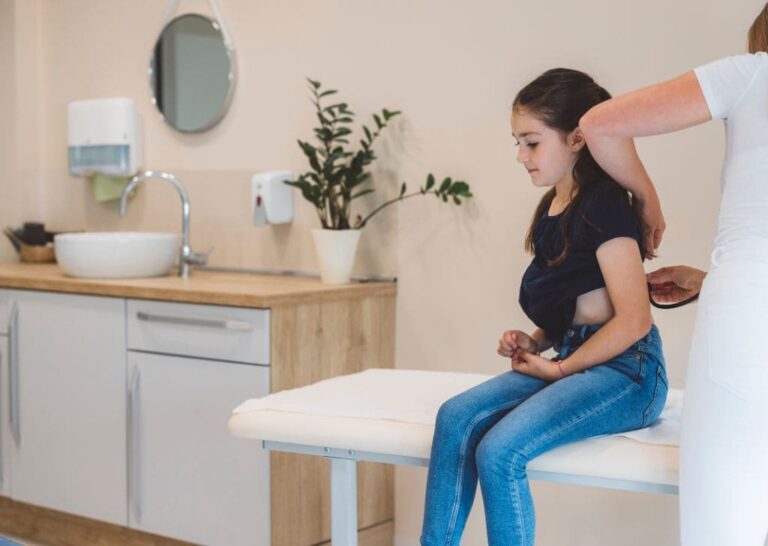
Scoliosis in kids and teens is often painless – which makes it harder to detect without regular checks. Common signs include:
- Uneven shoulders or hips
- A tilted rib cage when bending forward
- One pant leg appearing longer than the other
- Complaints of fatigue after standing or walking
Because young spines grow fast, early detection is key to preventing the curve from worsening over time.
Scoliosis Symptoms in Adults
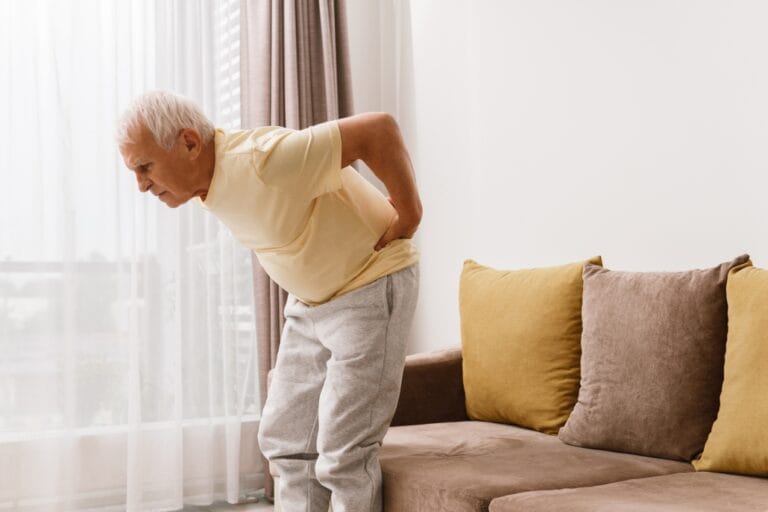
Adult scoliosis tends to show up with more obvious discomfort. Unlike children, adults may experience:
- Persistent back or hip pain
- Muscle stiffness or tightness in the lower back
- Fatigue from standing or walking
- Difficulty maintaining posture for long hours
Many adults develop scoliosis later in life due to wear and tear – known as degenerative scoliosis – which is highly responsive to physiotherapy.
Scoliosis in Adults vs Teenagers: What’s the Difference?
In teenagers, scoliosis usually develops during rapid growth. It’s often painless but can progress quickly. In adults, scoliosis often stems from spinal degeneration, injury, or untreated adolescent scoliosis.
Treatment goals differ too:
- For teens: prevent curve progression
- For adults: manage pain, restore function, and improve alignment
That’s why personalised care – especially through physiotherapy – is essential at any age.
Can Scoliosis Be Cured? Let’s Talk Honestly
Can scoliosis be cured? That depends on your definition of “cure.”
While structural scoliosis (especially idiopathic or congenital) can’t be reversed completely without surgery, many people live pain-free, active lives through conservative management. In mild to moderate cases, spinal curves can be significantly improved and stabilized – especially when caught early.
At Regenesis, our goal is not just to manage symptoms, but to restore control, confidence, and quality of life through expert-guided care.
What Scoliosis Physiotherapy Looks Like at Regenesis

When you hear “physiotherapy for scoliosis,” you might picture simple stretches for posture advice. But at Regenesis, we go far beyond that. Our scoliosis physiotherapy approach is highly personalized – designed to reduce discomfort, improve spinal function, and help prevent curve progression.
Here’s what a typical plan looks like:
Targeted Therapeutic Exercises
We use custom exercises to strengthen spinal and core muscles while promoting spinal alignment. These may include stretching, resistance training, and body awareness drills.
Manual Therapy
Gentle spinal mobilizations and soft tissue techniques relieve tension and enhance mobility, especially useful for degenerative scoliosis.
Schroth Method
A research-backed approach involving specific exercises and breathing techniques to correct spinal posture and control curvature progression.
Posture and Ergonomic Education
We teach proper sitting, standing, and movement habits to reduce spinal stress during daily activities.
Electrotherapy and Ultrasound
Used to relieve inflammation, reduce muscle pain, and accelerate soft tissue healing.
Scoliosis Treatment in Adults: What to Expect
Adults living with scoliosis often face a double challenge: structural misalignment and chronic pain. At Regenesis, we approach scoliosis treatment in adults with long-term function in mind.
You can expect:
- Pain relief through manual and electrotherapy
- Improved mobility through tailored exercise
- Guidance on daily activities like work ergonomics and sleep positions
It’s never too late to treat scoliosis – especially if it’s affecting your quality of life.
Best Practices to Manage Spinal Curvature Daily
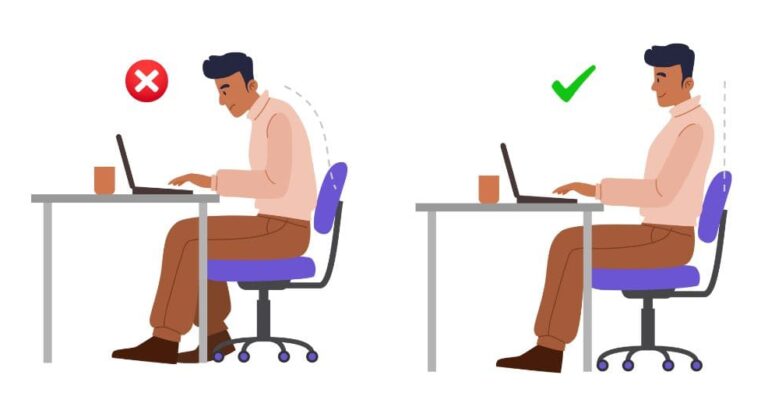
Even small lifestyle changes can make a big difference in managing scoliosis. Our physiotherapists will help you adjust:
- How you sit at work or in the car
- The kind of pillow or mattress you use
- How you carry bags or stand for long periods
You’ll also learn gentle home-based mobility exercises to maintain progress between clinic sessions.
Frequently Asked Questions
Scoliosis Causes, Cure, and Physiotherapy Options
While some forms (like idiopathic scoliosis) can’t be prevented, early detection and regular posture checks can slow or stop progression.
Not always. We perform a full physical assessment first and refer for imaging only if clinically necessary.
Not always. Many people with scoliosis feel no pain - but structural issues can still lead to problems later if untreated.
It depends on the severity. Most patients start with 1–2 sessions a week, followed by home exercises and regular reviews.
Want to Manage or Improve Your Curve? Let’s Start Today
You don’t need to wait until the pain is unbearable. The earlier you take action, the better your spine – and your future – will thank you.
Book your physiotherapy at Regenesis Physiotherapy today! Our licensed therapists are trained in advanced scoliosis physiotherapy techniques that actually work. We’re here to guide you every step of the way.


